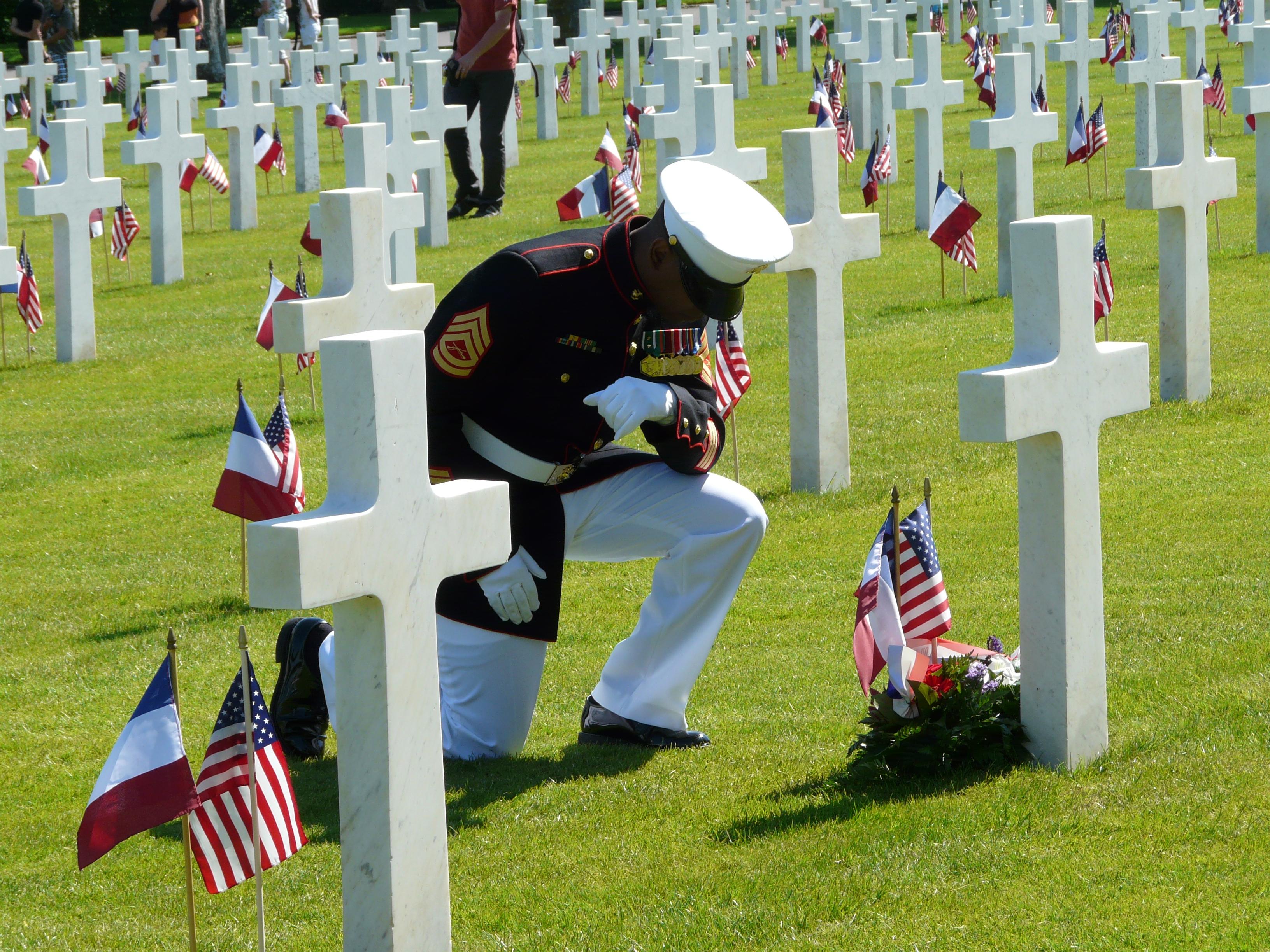Death doesn't know color
American Battle Monument Commission (ABMC) cemeteries do not have segregation by race and rank or religion do not count. This has been the case since the First World War.
After that extensive war, the American Federal government decided to organize the war cemeteries overseas well. The ABMC was established for this purpose on 4 March 1924, from then on responsible for the construction of cemeteries, monuments and chapels. The aim was to pay tribute to the fallen American soldiers of troops who took part in wars outside the US. Organization and maintenance of the eight war cemeteries outside the US was initially housed in the US War Department, but was transferred to the ABMC by President Roosevelt in 1934.
The American cemetery in Margraten is one of the 26 ABMC Cemetery and Memorials at the moment. (source ABMC)
In September 1944, when the cemetery was built in Margraten, a large distinction of a different nature was made. Immediately after a battle, fallen soldiers were buried by the Graves Registration Committee with the troops temporarily buried in a place near the confrontation with the Germans. A place near the battlefield has not already been set up or moved on for the troops. All casualties were immediately buried in emergency cemeteries. Both American and German soldiers, but also soldiers of other nationalities, ended up there temporarily. Even civilians who were killed were immediately buried there. That was for hygienic reasons, but above all to ensure that the soldiers who had survived the battle would demotivate the view of corpses along the road.
The casualties at these emergency cemeteries were excavated immediately after the American army started the construction of the cemetery in Margraten in September 1944. They were black soldiers who were charged with that. It was black drivers who drove the trucks with corpses to Margraten. Black soldiers unloaded the trucks.
The corpses that arrived were buried side by side without distinction. There was only one exception: the German casualties were buried at a great distance from the others buried in a separate section. They were later transferred to the German Military Cemetery in Ysselsteyn.
In 1947 a major repatriation operation of casualties took place. The relatives of the American soldiers could indicate whether they wanted to give a grave to their relative at home or whether Margraten should remain the last resting place.
It has not (yet) succeeded in finding out whether and how many black soldiers returned to the US during this operation. The ABMC Netherlands does not have this information. The Adoptiegraven Margraten Foundation does have the names of the approximately 10,000 repatriated soldiers, but this organization did not use race codes, as the American army did at the time.
In the United States of that time, however, death still had color. Throughout the centuries there has been strict racial separation at the cemeteries in the US. Even in the 21st century it has not disappeared everywhere. Racial separation was used in most of the American public and religious cemeteries. That started to change in the 1950s. But recently, dead of color - and also dead of other color - were buried in some cemeteries far away from white Americans. The best places were - not surprisingly - for white Americans. Over the centuries, protests were made against this. The American Military Cemetery Arlington in Virginia, still knew racial separation until the early 1960s when President Truman put an end to it and for the first time a black veteran was buried in the former white section.
The question is whether the black soldiers who were repatriated from Margraten got a final resting place at home where death had no color.
